Scientists argue about the origin of the world, the size of the universe, the primacy of the egg or the chicken. The topic of running or bicycling enters the circle of unsolvable questions. Academician N.M. Amosov believed that even ten minutes of running in place strengthens the heart. Dr. Barrer, director of the Institute of Neurology (Philadelphia), has a different opinion. The world-renowned neurosurgeon warns: be careful with sports! You need to be well aware of the risk of possible consequences, because every medal has a downside. Comparing the opinions of scientists, physicians, professional athletes, let’s try to answer the question: what is better to run or bike?
World news
Austrian researchers published the results of an unusual experiment. Scientists tried to determine how fast people have to move to escape from death, and at the same time to find out how fast Maren is moving. The basis were taken data from 1700 men of different nationalities living on all continents. The result of long-term work showed that death “walks” with a speed of about 3 kilometers per hour. The unattainable value was 5 km/hour. Summary: it is necessary to walk with such speed, but it is better to run or ride a bicycle.
What is the difference between cycling and running
In the twenty-first century, it’s impossible to stay healthy without effort. Running and cycling eliminate many of the effects of poor diet, compensate for the damage from bad habits. But with the general benefits of these sports, the load on the body is significantly different.
Running is characterized by biomechanical resonance, which is absent in cycling. When you land on your heel, a kickback is formed, moving blood up through the blood vessels. Medics call the phenomenon a “hydrodynamic pump” with beneficial properties. The basic training technique is to run the distance at a steady pace at a constant speed.
When riding a bicycle, the load is adjusted by choosing the right gear or switching to a coasting ride. During one hour of cycling half of the body muscles are engaged and 500 kilocalories are burned. While running, a person loses 300 kilocalories and engages 45% of the muscular apparatus. A runner puts an order of magnitude more strain on his joints than a cyclist. The pressure on the heart is also different: jogging gets your heart rate above 120 beats per minute; cycling – from 90 bpm. Even an untrained cyclist will ride at a quiet pace for 30-40 km, which is not the case for a runner.
Both sports have a positive effect on the body. But running refers to basic physical activity, while cycling is a hobby.
Effects on the body of running and riding a bike
Necessary for people physical activity increases the body’s intake of air, improves the lungs, heart, blood vessels and circulation. Running and biking in the U.S. have reduced coronary disease deaths by a quarter and increased average life expectancy.
General effects on the body:
- an increase in vitality;
- Ability to cope with the effects of psychological stress;
- improvement of digestion;
- weight control;
- stronger bones;
- slowing of aging processes;
- Preparing a woman’s body for a favorable course of pregnancy and childbirth;
- relief from insomnia;
- increased capacity for work;
- protection from illnesses.
Regular exercise is not enough to strengthen and maintain health. You should maintain a normal weight, eat right, undergo preventive medical examinations.
Strengths and weaknesses of running
The scientific data was presented by Dr. Kenneth Cooper. The world-renowned expert in wellness medicine established the following. If not participating in competitions, a person should limit running training to 20-25 km per week. Longer distances increase the probability of impaired bodily functions, and shorter distances do not produce the desired effect.
| Advantages | Drawbacks |
|---|---|
| Increases blood circulation, reduces blood viscosity | Excessive blood supply of adrenal hormones |
| Strengthens the vascular wall | Colossal cumulative strength in kilograms per square centimeter of leg |
| Prevents heart attack | Permanent injuries (up to 79% in people who run regularly) |
| Prevents the deposition of salts and cholesterol plaques | Increased stress on ankle joints, knees, and intervertebral discs |
| Reduces body weight | Damage to soft tissues as a result of excessive stretching or impact force |
| Improves the outflow of bile through the rhythmic vibration of the liver | Occurrence of patellofemoral syndrome (“runner’s knee”), plantar fasciitis |
| Normalizes lipid metabolism | Occurrence of pain in the side. |
| Improves digestion | Lack of control of pace and ligament strain |
| Improves immunity and general stamina | Chafing blisters, sunburn, smog inhalation |
| Activates the body’s neurohumoral system | Dehydration |
| Combats colds, neurasthenia and insomnia | Ankle sprains and fractures above the ankle joint when traveling over rough terrain |
| Prevents the development of degenerative age-related changes | High “impact index” when running on asphalt |
Scientists at a rehabilitation center in Toronto, Canada, call recreational running a natural tranquilizer, more effective than medication. Studies have established the undeniable benefits of running:
- During jogging, the diaphragm massages the liver, improving bile duct function
- Increases intestinal motility;
- it burns excess fat;
- running prevents sciatica and arthritis by increasing lymph flow to intervertebral discs and joint cartilage.
American physicians found that intense running increases endorphins in the blood by 5 times. The indicator of the hormone of joy is held for several hours.
Pros and cons of cycling
Among the many advantages of cycling note the following:
- There are no age restrictions.
- Physical endurance and immunity are increased.
- Lung volume increases from the usual six to nine liters.
- Cycling for an hour will burn 600 calories and reduce body weight.
- The circulatory system pumps twice as much oxygen.
- Cycling improves sleep, relieves stress.
- Accelerates metabolism, prevents the development of prostatitis.
- Trains leg muscles, strengthens the buttocks.
- Cycling strengthens the cardiovascular system.
- Reduces cholesterol levels, protects blood vessels from blood clots.
- Increases skin turgor and slows down aging processes.
- Cycling increases the body’s resistance to viruses and infections.
- Relieves problems with varicose veins.
- Abdominal muscles when cycling horizontally keep the body in the right position.
Professional athletes, cyclists and out-of-towners see only the merits of the vehicle. Medics and researchers have identified the disadvantages of riding a bicycle:
- High injury rates (more than 4 cases per cyclist when riding for 14 years);
- Increased risk on the roads (bicycles are equated with motorcycles);
- Overload caused by the cyclist’s posture while riding;
- Muscle and joint pain associated with repetitive motion;
- compression neuropathy in the elbow joints and groin;
- cervical vertebral pain;
- calorie burning takes a long time;
- cost of the bike and equipment;
- constant maintenance of the structure;
- expensive maintenance of bicycles in repair shops.
Which burns more calories running or cycling?
Runners live longer and have higher lipid metabolism rates. Cyclists are better at “pumping” the brain, controlling attention and getting high from riding. Both sports normalize weight and improve your figure, but burn calories differently.
Energy expenditure at an average pace of running is 600 kcal/hour, weight loss is 1 kg per month.
Calorie loss while cycling depends on the type of vehicle, the terrain of the trail (mountain or highway), and the load. The averages are:
- Level road – 420 kcal/hour.
- Sports training at medium load – 600 kcal/hour.
- Professional cycling on a good highway – 700 kcal/hour.
- Calorie consumption on a bicycle increases considerably when you ride Cross-country—what-it-is–nuances and have an increased load on your legs.
- During recreational running (a kind of jumping), the action is directed opposite to the force of gravity. Therefore, it is impossible to reduce the amount of energy expended, even if you run slowly.
- The minus of cycling is the unpredictability of the load, depending on the model of the bike and the track. On the plus side, you can adjust the threshold of exertion with the speed changer and the coasting method of cycling.
Calorie Counting While Cycling
To find out how many calories a cyclist burns in an hour, a fitness calculator is used. For example, at a speed of 15 km, the energy consumption will be 300-400 kcal. Riding a bicycle at a speed of 20 km / h – 500 kcal. For comparison, running at a speed of 8 km / hour burns 450 calories. Often calculators from the Internet overestimate cycling. Therefore, experienced cyclists calculate energy consumption with a heart rate monitor. The weight of the person, the level of the track, the weather are taken into account. If there is no special device, the exact figure will give the average heart rate calculation. The formula is used to calculate calorie consumption by distance and intensity. The margin of error is 0.05-0.1 kcal per kilogram and kilometer. To calculate, do the following math:
Calorie consumption = 0.014 * per person’s weight * cycling time * average heart rate during the ride.
Tips for the most effective weight loss workouts
“It is necessary to run fast, or not to run at all,” argued Academician N.M. Amosov. Physical activity activates fat metabolism and normalizes body weight. With regular exercise, weight is close to the ideal index. The fat content is 1.5 times lower compared to a person who does not run.
There are recommendations for fast weight loss for runners and cyclists:
- Effective fat burning is achieved in the first 40 minutes with a load of at least 110-130 bpm.
- Additional energy expenditure in 2 weeks results in a loss of 500 grams of fat tissue if you reduce the caloric content of the diet.
- Without dietary restrictions, weight loss will average 7 kg in 14 days.
- It is recommended to gradually increase the load with the obligatory counting of the heart rate.
- To ensure that the lost calories do not immediately return to the body, be sure to drink water after training and do not eat for 1-2 hours.
- The rule of thumb helps to burn fat: the amount of energy expended should exceed the amount received with food.
- Cyclists who want to lose weight are advised to increase the speed of riding, to increase the training time, to change the city bike for a mountain bike.
- It is difficult for women over 40 to lose weight on a bicycle. It is better to take up running.
- The pace of exercise and the amount of load burns more calories.
Conclusion
When comparing what is better for weight loss – running or biking, it is impossible to establish the truth. Some believe that runners burn calories quickly and burn fat more efficiently. Cyclists argue the opposite. Perhaps an eastern parable will help us make up our minds. A negligent young man decided to test his mentor. Clutching a butterfly in his hand, the disciple went with the question, “Is the moth in my palm alive or dead? If the elder decides that the butterfly is alive, you have to clench your fist, and he won’t guess.” But to shame the sage failed. “Everything is in your hands,” replied the Master.

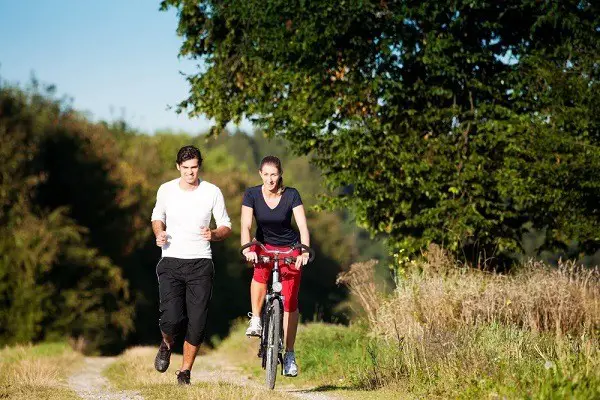
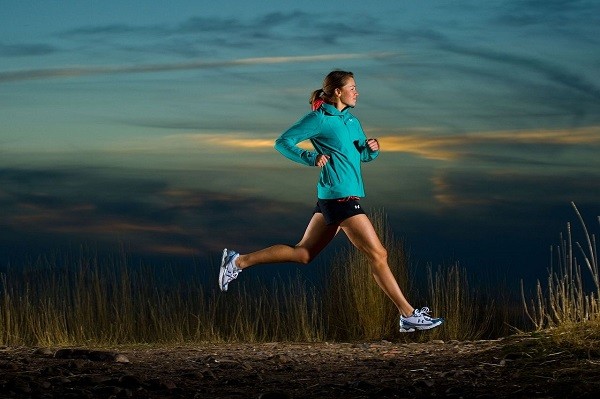

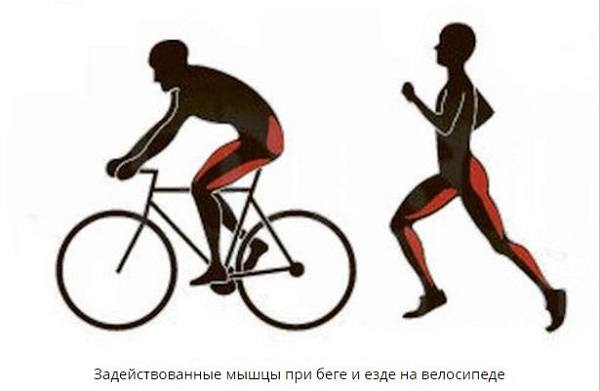



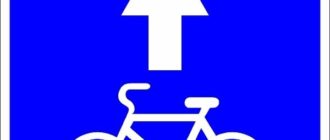
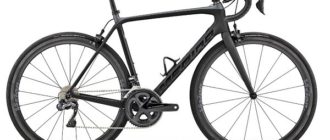
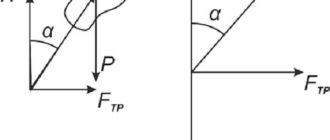
I’m convinced from my own experience that bicycles are the best way to lose weight. It effectively burns fat and tightens the skin, and makes it firmer. Slows down the aging process, improves digestion. I recommend it to everyone.